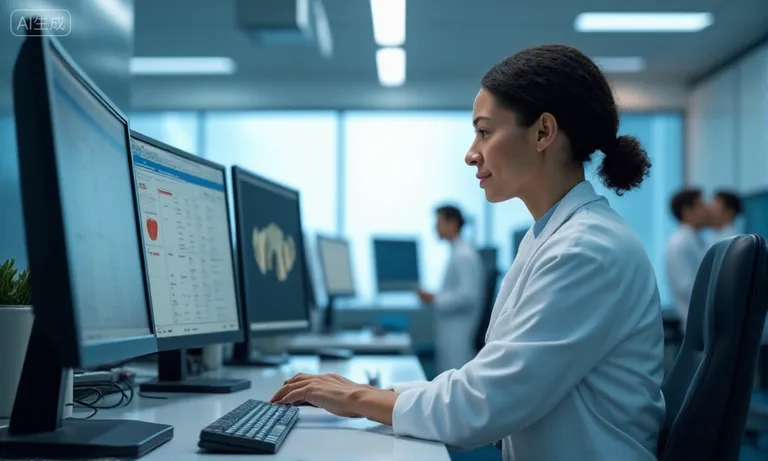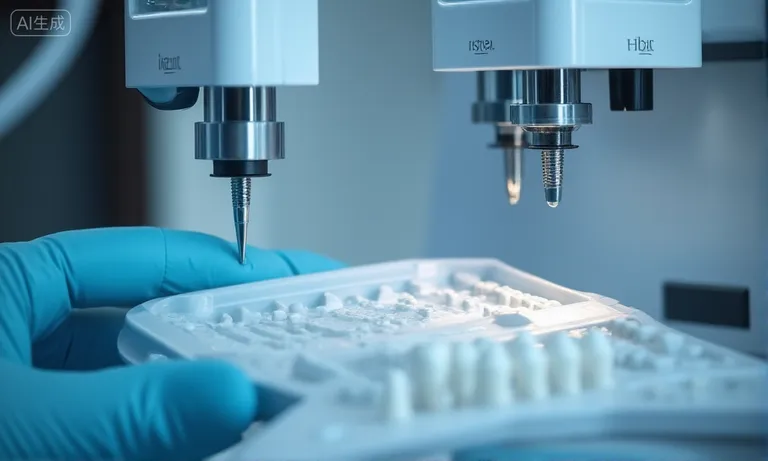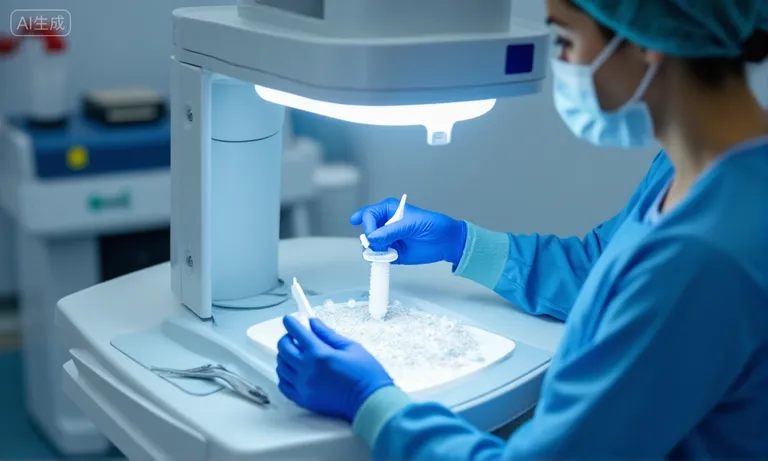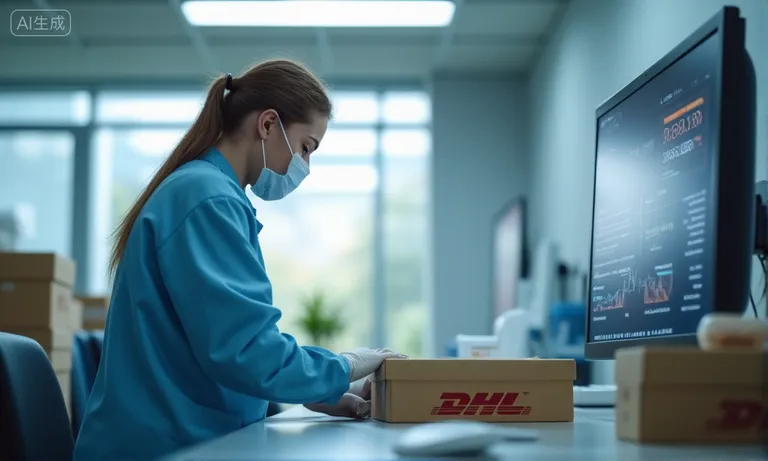Turnaround time in dental implant cases using 3D printing is determined by how efficiently each stage of the workflow is managed, how complex the case is, and how well production variables are controlled. It is rarely just about owning printers—it is about integration, coordination, and consistency across the process.
Key considerations include:
- Workflow stages such as file submission, design approval, and lab scheduling.
- 3D printing technology parameters, including printer type, layer thickness, and orientation.
- Post-processing steps like curing, polishing, and support removal, which add hidden hours or days.
- Remake frequency caused by inaccuracies, which silently extend delivery cycles.
- Logistics and lab location, from local chairside options to overseas outsourcing, each with different turnaround profiles.
- Supplier evaluation standards, such as workflow automation and historical delivery consistency, which signal whether a lab can reliably meet deadlines.
By understanding these drivers, buyers can set realistic expectations, compare suppliers on the right criteria, and select partners who ensure consistent and timely case delivery. The goal is not just speed, but predictable turnaround that supports long-term clinical and operational planning.
Which Workflow Stages in Implant Cases Have the Greatest Impact on Turnaround Time?
Turnaround in implant cases is shaped less by a single step and more by how smoothly each workflow stage connects. The stages that most often dictate delivery speed are digital file submission, design approval, case complexity, and production scheduling. Clinics that understand these dependencies can better anticipate realistic timelines and avoid unnecessary surprises.

Dental-Lab-Workflow-Implant-Cases
File submission and CAD format compatibility in dental implant labs
The first factor influencing turnaround is the format and accuracy of the submitted files. If a clinic sends STL or proprietary CAD data that is incompatible with the lab’s software, the case will stall while conversions or clarifications are made. Even a one-day delay in clarifying scan margins or occlusal clearance can cascade into a week-long extension if the lab’s production slots are already allocated. This is why buyers often ask whether a lab supports a broad range of systems, from 3Shape to Exocad.
Design approval speed between clinicians and lab technicians
Another common bottleneck occurs during the design approval stage. If the lab must wait days for a clinician to approve a proposed implant crown or bridge design, printers remain idle and schedules shift. Clinics that respond within hours instead of days help labs lock in print queues quickly. Experienced labs typically provide annotated screenshots or quick 3D previews to accelerate decisions, which saves significant production time.
Case complexity and turnaround differences: single-unit crowns vs multi-unit implant bridges
Complexity also changes expectations. A single-unit crown can often be printed, post-processed, and finished within a week, while a multi-unit implant bridge may require multiple design iterations and trial fits. Buyers evaluating turnaround should account for this built-in variance, rather than assuming all cases follow the same schedule. For instance, one clinic ordering a full-arch case during a busy season may wait nearly double the time compared to a single posterior crown.
Production scheduling and lab capacity during peak periods
Finally, production capacity plays a decisive role. During seasonal peaks or when multiple DSOs send cases at once, labs operate on tightly managed queues. A lab with multiple printers and defined shift coverage can absorb the load, while a smaller operation may extend delivery by several days. Clinics that share forecast volumes with their lab partners often secure more reliable delivery slots.
In our own experience as an overseas dental lab, we’ve seen how even small adjustments—like aligning CAD formats early or setting up rapid feedback channels—can shorten delivery windows by days. At Raytops Dental Lab, this alignment often makes the difference between a case arriving in 7 days versus 10, proving that workflow management is as critical as printer speed itself.
How Do 3D Printing Technologies Influence Production Speed?
Printer technology directly determines how quickly implant restorations move from design to finished product. The choice between DLP and SLA, the selected layer thickness, orientation strategies, and batch capacity all add or subtract hours from the total turnaround. Buyers evaluating delivery times should look beyond “3D printing” as a single term and understand how these variables change real schedules.

Dental-Lab-3D-Printing-DLP-SLA
DLP vs SLA: how printer choice affects delivery times
DLP printers cure each layer with a full projection, making them faster for larger builds. SLA units scan each layer with a laser, often resulting in longer print cycles but finer detail. In practice, a DLP printer may complete a full arch model in six hours, while an SLA system may take ten or more.
| Technology | Relative Speed | Precision | Best Use Case |
|---|---|---|---|
| DLP | Faster (bulk curing) | High but less than SLA | Multi-unit cases, volume production |
| SLA | Slower (laser scanning) | Very high | Esthetic single-unit restorations |
Layer thickness trade-offs: precision vs turnaround speed
Layer height directly balances speed and accuracy. A 100-micron setting prints faster but may need more post-finishing, while a 50-micron setting takes longer but delivers a surface closer to final esthetic standards. Clinics expecting ultra-smooth anterior crowns must accept longer production time compared to posterior units where function outweighs polish.
- 100 microns → faster, good for provisional or posterior work
- 50 microns → slower, suitable for esthetic anterior zones
Printing orientation and support design efficiency in implant restorations
Orientation affects both strength and time. Printing a crown vertically minimizes contact points and reduces resin waste, but requires additional hours for support removal. Printing horizontally saves curing time but may risk margin accuracy. Experienced labs balance these trade-offs depending on case type, aiming for both predictable delivery and clinical fit.
Batch printing capacity for multiple implant cases
Another hidden variable is batch size. Some printers allow simultaneous printing of multiple crowns or bridges, maximizing throughput overnight. Others are limited to fewer units per tray, which forces sequential runs. This difference can mean the lab delivers ten single crowns in one cycle versus spread across two or three days.
For buyers, the takeaway is that not all “3D printed” restorations follow the same timeline. Turnaround depends on equipment choice and parameter settings. Overseas dental labs like Raytops Dental Lab have learned to tune these variables for specific case types, ensuring a predictable balance of speed and accuracy for their partners.
Why Do Post-Processing and Finishing Steps Extend Turnaround Time?
Many buyers assume that once a crown or bridge is 3D printed, it can be shipped immediately. In reality, post-processing often adds several hidden hours—or even days—to the total turnaround. Cleaning, curing, surface finishing, and support removal are non-negotiable steps that ensure biocompatibility, esthetics, and clinical fit.

Dental-Lab-Postprocessing-Implant
Cleaning and curing requirements in implant prosthetics
The first step after printing is cleaning and light curing, which ensures resin residues are fully removed and the restoration reaches required strength. This process typically involves:
- Initial wash in alcohol baths to eliminate excess resin.
- Secondary cleaning under ultrasonic agitation for fine removal.
- Post-curing under controlled UV light to stabilize the polymer.
Each of these stages takes time, and skipping or rushing them risks structural weakness or discoloration once in the mouth.
Surface finishing and polishing for esthetic restorations
For anterior crowns or implant bridges, polishing is not optional—it is what transforms a raw print into a clinically acceptable restoration. Surface finishing removes visible layering, adjusts occlusion, and ensures natural translucency. A technician may spend over an hour perfecting a single anterior unit. While less time is required for posterior restorations, these manual steps still extend the delivery schedule.
Why support structure removal adds hidden hours to turnaround
Support structures stabilize restorations during printing, but removing them is labor-intensive. Each attachment must be cut, ground, and smoothed without damaging margins. In small single-unit cases, this may take only minutes, but for multi-unit bridges with dozens of supports, removal can stretch into several hours.
- Small units → minimal support trimming, faster turnaround.
- Multi-unit frameworks → extensive trimming, higher finishing time.
- High-precision cases → require rechecking margins after removal, adding additional verification steps.
These steps explain why a printed crown is never ready “straight from the machine.” Post-processing is often the silent driver behind delivery time. For procurement teams, recognizing this reality helps in setting fair expectations and avoiding miscommunication with lab partners.
How Does Remake Rate in Implant Restorations Affect Delivery Schedules?
Remakes are one of the most underestimated causes of delayed delivery. Every time a restoration fails to meet fit, esthetic, or functional requirements, the entire cycle restarts—from design adjustments to re-printing and finishing. Even a small percentage of remakes can compound into significant time losses across multiple cases.
Common causes of remakes in dental implant work
Remakes usually stem from three recurring issues:
- Impression or scan inaccuracies → distorted data leads to margins that don’t seat correctly.
- Design miscommunication → esthetic preferences not clearly approved before production.
- Material or milling mismatch → shrinkage, warping, or incorrect material selection.
Each of these factors may appear minor at the start but results in full repetition of production.
How digital accuracy reduces remake frequency
Digital systems significantly cut remake rates by improving data integrity and traceability. A clear example is the difference between conventional impressions and intraoral scans.
| Workflow | Typical Remake Rate | Key Advantage |
|---|---|---|
| Conventional impressions | 5–10% | Risk of distortion, multiple shipments |
| Digital intraoral scans | 1–3% | Direct CAD integration, fewer errors |
Labs that integrate digital margin marking, implant libraries, and consistent CAD/CAM checks usually achieve more predictable first-time fits.
The hidden cycle time lost in remake and re-delivery
Every remake is not just a repeat of the printing step—it reopens the entire production window. A remake can add 5–7 days to delivery if the case requires design revision, lab scheduling, and another shipping cycle. For buyers managing dozens of cases, these hidden delays compound into noticeable workflow disruption, patient rescheduling, and lost revenue.
For clinics and procurement teams, controlling remake frequency is as important as printer speed. From our side as an overseas dental lab, we’ve seen how early digital checks and transparent approval steps prevent wasted cycles. At Raytops Dental Lab, minimizing remake risk is a core part of how we keep delivery schedules stable for long-term partners.
What Role Do Logistics and Lab Location Play in Case Turnaround?
Even the fastest digital workflow cannot overcome physical delays caused by shipping and geography. Whether a case is handled locally or outsourced overseas, logistics often adds the final and sometimes decisive factor to turnaround time. Buyers weighing local versus global partnerships need to understand the trade-offs across location, shipping, and communication.

Dental-Lab-Logistics-Implant-Delivery
Local dental labs vs overseas outsourcing: turnaround trade-offs
The first choice buyers face is between a nearby lab and an overseas partner. Each option offers unique strengths:
| Lab Type | Typical Turnaround | Advantages | Considerations |
|---|---|---|---|
| Local labs | 3–5 days | Faster delivery, same-day communication | Higher unit cost, limited scaling capacity |
| Overseas labs | 7–10 days (with express courier) | Lower cost, access to large production capacity | Customs, timezone coordination |
Clinics needing urgent single cases may prefer local labs, while DSOs seeking consistent volume often turn to overseas labs with scalable infrastructure.
Shipping methods and customs clearance in global dental workflows
International delivery time depends heavily on shipping choices. Express couriers like DHL or FedEx can deliver in 3–4 days door-to-door, while economy shipping may stretch to 7–10. Customs clearance is another variable—proper documentation and pre-clearance arrangements can reduce hold-ups.
- Courier pickup at lab facility.
- Air freight transit with express vs economy service.
- Customs clearance using pre-declared HS codes for dental products.
- Local delivery to clinic or DSO distribution hub.
Each step carries time costs that labs must anticipate and build into delivery promises.
Tracking and communication in international delivery
Real-time tracking is vital when cases cross borders. Buyers who receive proactive updates on shipping status, expected clearance, and local delivery windows can manage patient scheduling with confidence. Conversely, poor visibility leads to frustration and missed appointments. Labs that integrate digital tracking dashboards or provide direct courier links help reduce this uncertainty.
For buyers, logistics and geography are not afterthoughts—they are core components of delivery planning. From our perspective as an overseas dental lab, Raytops Dental Lab has seen that reliable courier partnerships and transparent communication are often what make overseas turnaround competitive with local options.
How Can Buyers Evaluate a Dental Lab’s Ability to Deliver on Time?
Evaluating turnaround reliability is not guesswork—it comes down to clear indicators, workflow discipline, and the right questions during vendor selection. Buyers who check these aspects upfront are far less likely to face hidden delays once cases are in production.

Dental-Lab-Evaluation-Implant-Turnaround
Key indicators of reliable turnaround in implant cases
Reliable labs typically show consistency across these signals:
- Average turnaround time disclosure → openly stated timelines per restoration type.
- On-time delivery percentage → tracked and shared with clients.
- Remake rate → transparent reporting of remake frequency.
- Communication response time → whether inquiries are addressed within hours, not days.
SOP consistency and workflow automation as reliability signals
Standard operating procedures (SOPs) and automation reveal how much a lab relies on system discipline versus ad-hoc fixes.
| Reliability Factor | Why It Matters | What to Look For |
|---|---|---|
| SOP consistency | Prevents case-by-case errors | Documented steps for every workflow stage |
| Automation | Reduces manual bottlenecks | CAD/CAM integration, auto-notifications |
| Scalability | Handles volume spikes | Multiple printers, flexible technician shifts |
Labs with proven SOPs and workflow automation usually deliver with less variance, regardless of case complexity.
Questions to ask when evaluating outsourcing partners
Buyers can test a lab’s reliability by asking structured questions during the evaluation stage:
- What is your average turnaround time for single crowns vs multi-unit bridges?
- How do you handle remakes, and what is your documented remake rate?
- Which courier services do you use, and how do you manage customs clearance?
- Do you provide digital dashboards or delivery tracking for clients?
Clear answers show whether the lab has thought through operational risks.
Red flags of unstable delivery performance
Certain warning signs should raise concern:
- Frequent changes in quoted turnaround times.
- Lack of documented SOPs or quality control processes.
- Delayed responses to design approvals or queries.
- Vague reporting on remake or on-time delivery rates.
For procurement teams, a lab’s ability to deliver on time is one of the clearest signals of long-term partnership value. As an overseas dental lab, Raytops Dental Lab has seen how buyers build trust faster when labs are transparent with data, consistent in SOP execution, and proactive in communication.
Conclusion
Turnaround time in dental implant cases is shaped by workflow coordination, printing technology, post-processing, remake frequency, and logistics. For buyers, reliable delivery is not just about speed—it is about predictability and minimizing disruptions to patient schedules. The most dependable partners are those who combine digital accuracy, clear SOPs, and proactive communication. As an overseas dental lab, Raytops Dental Lab works within this framework to help clinics, DSOs, and distributors achieve consistent timelines. Choosing the right lab is ultimately about securing a partner who understands that every day saved directly impacts patient care and business efficiency.


